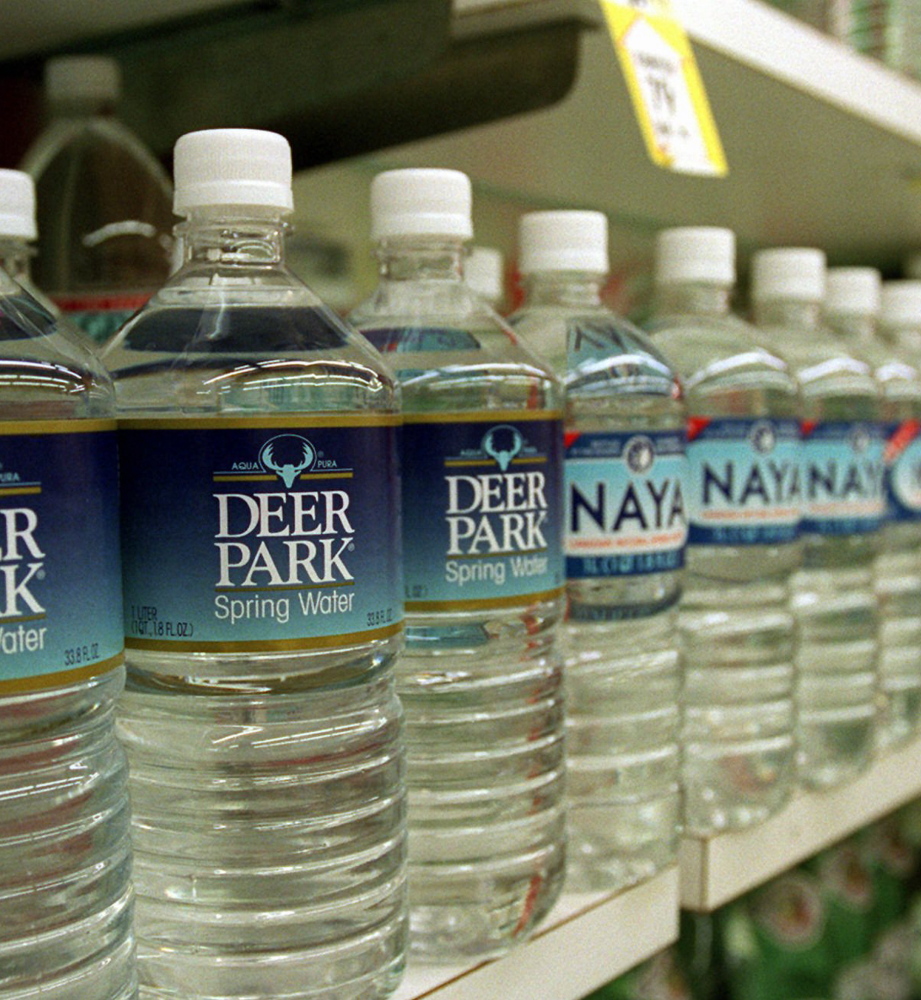Once an occasional indulgence, bottled water is quickly becoming America’s drink of choice.
The average person in the United States now consumes more than 35 gallons of bottled water per year, according to data from market research firm Beverage Marketing Corp. That’s about 270 bottles, and more than twice as many as people drank 15 years ago. And that number is only going to go up: By 2017, the average American is expected to drink almost 300 bottles annually.
For perspective, consider that over the next two years, bottled water is expected to eclipse soda as the most consumed packaged drink in the United States.
“It’s not a question of whether, but when, it will happen. We see it happening in about two years,” said Gary Hemphill, who is the managing director of research at Beverage Marketing.
The growing popularity of bottled water, especially in a rich country like the United States, is a touchy subject. Sustainable water activists bemoan the billions of bottles that are consumed each year as an example of American excess. They point to the industry’s carbon footprint and to the country’s high-quality municipal water system in hopes that people will rethink the issue, buy a refillable container and leave the army of packaged H2O on shelves.
But bottled-water makers take issue with the arguments against their industry. They tout their product as a healthy alternative to sugary drinks and say that it’s a safer option for those who live in areas where clean tap water is unavailable. And their message seems to be getting across, because Americans love the stuff.
The rise of bottled water in the United States is nothing new – Americans have been drinking more of it for nearly two decades now – but its staying power says a lot about what people look for when they want something to drink. A few underlying trends stand out.
The first is the ascent of health consciousness, which has helped bottled water as much as it has hurt soda. “Consumers see it as a healthy beverage alternative,” Hemphill said.
The second is the ubiquity of options. “If you grew up in the ’70s and you wanted something cold and refreshing to drink, you would have a carbonated soft drink because there really weren’t very many other options,” Hemphill said. “But now there are tons, and bottled water is kind of at the center.”
Bottled water has also been marketed down Americans’ throats. In order to distinguish a product that is often indistinguishable, the industry has bombarded consumers with a plethora of clever campaigns, which depict exotic springs, far-off mountains and fresh, untapped streams of natural water. Popular brands, like Evian, have embraced slogans like “Live Young,” almost daring people not to be seen with a bottle. In all, bottled-water brands spent upwards of $80 million on advertising last year, according to the Wall Street Journal.
“Bottled water has become this healthy, sexy thing to drink,”said Peter Gleick, founder of the Pacific Institute and author of several books about bottled water. “Certain brands have become so chic that there’s a real cachet associated with them.”
Copy the Story LinkSend questions/comments to the editors.



Success. Please wait for the page to reload. If the page does not reload within 5 seconds, please refresh the page.
Enter your email and password to access comments.
Hi, to comment on stories you must . This profile is in addition to your subscription and website login.
Already have a commenting profile? .
Invalid username/password.
Please check your email to confirm and complete your registration.
Only subscribers are eligible to post comments. Please subscribe or login first for digital access. Here’s why.
Use the form below to reset your password. When you've submitted your account email, we will send an email with a reset code.